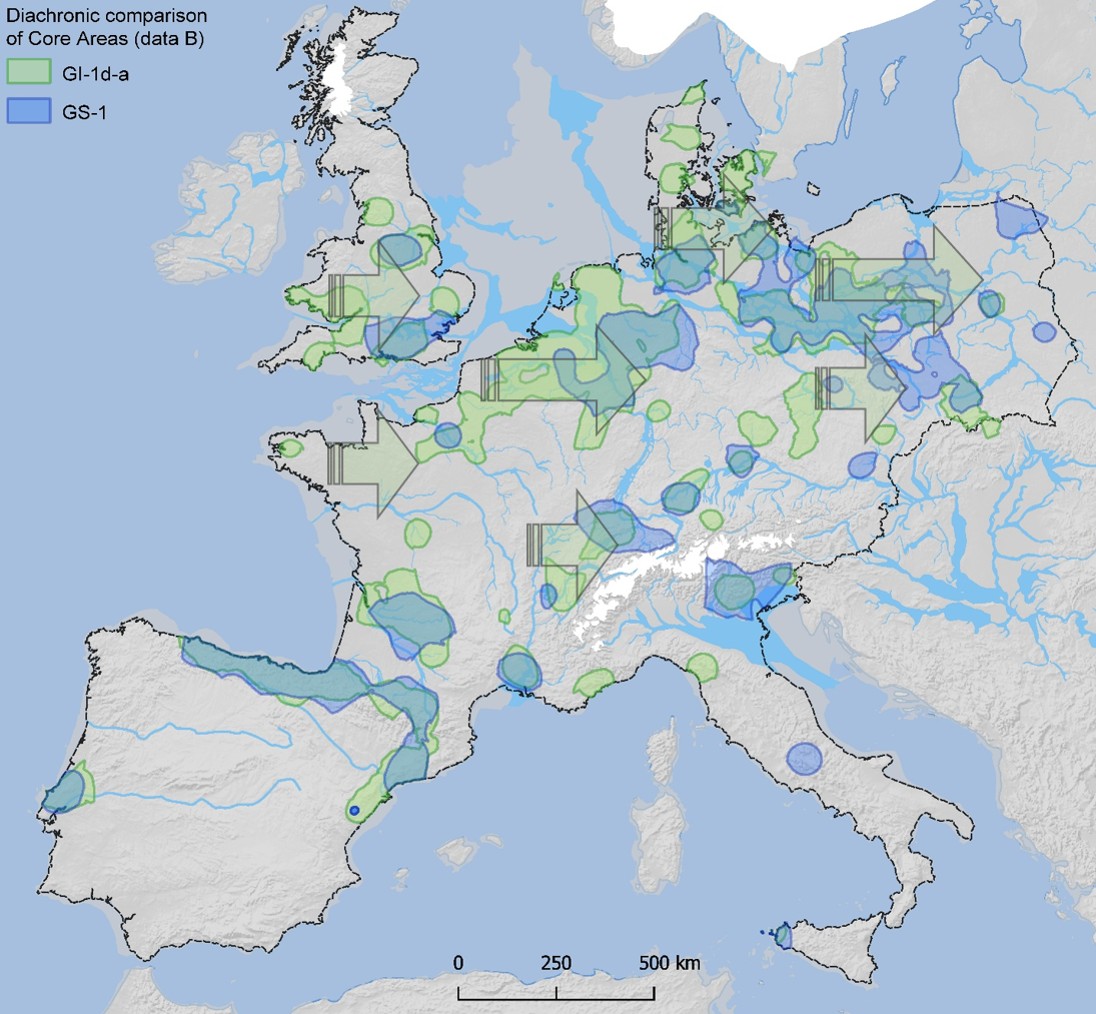What happens to human societies when the world suddenly turns cold? A new study led by researchers from the University of Cologne reveals how prehistoric populations in Europe responded to dramatic climate shifts about 12,000 years ago. Focusing on the Final Palaeolithic period, the team examined how abrupt cooling events—especially the Younger Dryas—reshaped where and how people lived. By analyzing archaeological data from across large parts of Europe, the study offers a rare window into the challenges our ancestors faced at the end of the Ice Age.
The findings show that during a warmer phase, like the Greenland Interstadial 1, human populations rapidly grew and expanded into northeastern Central Europe. But when the climate suddenly cooled during the Younger Dryas (around 12,900 years ago), total population estimates dropped by half. Interestingly, this decline wasn’t uniform: in some regions—such as northern Italy, Poland, and northeastern Germany—populations actually increased. These patterns suggest not just collapse, but migration and adaptation. Faced with deteriorating conditions, early humans moved eastward, seeking out regions that remained relatively hospitable.
This research challenges the idea that prehistoric communities simply disappeared in the face of climate change. Instead, it shows early humans as resilient and resourceful, capable of reorganizing and moving when survival demanded it. While today’s climate crisis is different in scope and cause, these deep-time responses remind us that mobility, flexibility, and innovation have always been key to the human story—especially when it gets cold.

Population shifts from south-western to north-eastern Europe during the last cold phase of the Ice Age. Photo: Isabell Schmidt, University of Cologne.
To learn more, explore the paper: https://doi.org/10.1371/journal.pone.0310942
Or the UoC press release:
Please note that ChatGPT (OpenAI, May 2025, https://chat.openai.com) was used to refine parts of the text, which was subsequently edited by the author for structure, style, and content.

